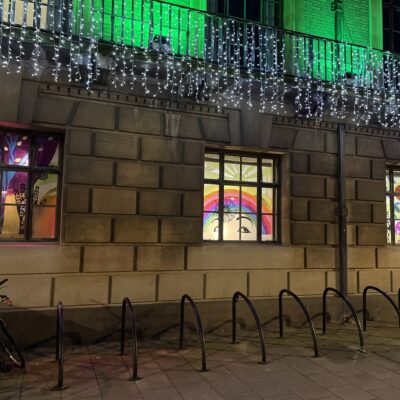Search by topic
- archaeology
- Building of Local Interest
- charity
- church
- crime
- dressmaker
- fire
- Great Eastern Railway
- Listed building
- Mapping Relief
- medieval
- oral history
- poverty
- Public House
- Rattee & Kett
- Religious House
- Roman
- scholar
- school
- Then and Now
- tudor
- women
- work
- world war one
- world war two
Search by text
 136 Eagle Cottage Cherry Hinton Road
136 Eagle Cottage Cherry Hinton Road136 Cherry Hinton Road (Eagle Cottage)
History of 136 Cherry Hinton Road
1901
(Eagle Cottage)
Juliette Minault, 50, semptress, born Orleans France
1911
(in this census although the property is described as Eagle Cottage on the second page, on the first page it is described as Grove Lodge.)
Juliet Menault, head, about 60, single, caretaker of cottage, born France (French subject)
In 1911 the Papworth family had lived in Oxford Villa, Hinton Avenue. They were Edward, a railway clerk, his wife Mabel and their three children, Constance Ruth b. 1896, occupation ‘lady’s companion,’ Oswald Jack b. 1898, and Gladys Mabel b.1899. They later moved to 175 Cherry Hinton Road.
Oswald became a L.Cpl. in the 9th Coy Machine Gun Corps. He died 13th April 1917, possibly during the First Battle of the Scarpe during which his unit were active. His death was reported 18/5/1917; there is no known grave.
Stanley William Williamson, sergeant in the RAMC at 1st Eastern General Hospital Cambridge. Born in 1893, in 1911 he was living at 8 Coronation Place Cambridge and working as a laboratory assistant. He enlisted in 1914 and married Constance Papworth in 1918 at St John’s.
In 1987 an interesting discussion was provoked in the CWN by Dan Jackson’s article about the eagle crest on the cottage.
He pointed out that the cottage is not aligned with other houses in the road and answered this an other questions with information provided by Edward Annis who had lived there for 25 years. When the cottage was built in 1862 it was the only house in the top half of Cherry Hinton Road, at that time called Long Drove.
One theory of the cottage’s origins was that it was built as a stationmaster’s house when it was thought that the railway would cross the road at this point. However, there is no evidence of this. Nor could it have been the office for the Rock estate company since they did not move into the area for another 20 years.
It is the case though that the cottage was built in 1862 by a former Vice Provost of King’s College, Mr Martin Thackeray of Portman Square, London and leased to Mr Stephen Adcock of Trumpington. The house was described as a ‘model cottage’ and was built on land formerly called ‘Old Pins.’ Mr Adcock died after 5 years and in 1885 three joint owners sold the cottage and some land to the Rock Freehold Land Society Ltd.
A letter to the paper in January 1988 confirmed that ‘the eagle with wings raised, with an arrow in its beack and a cherub’s head on its breast, is the principal crest of the Thackeray family, originally of Essex. martin’s father, Thomas, was a surgeon in Cambridge. Martin was born in 1783, entered King’s as a scholar in 1802 and was Vice-Provost 1926-34. He died in London in 1864 and was the uncle of the novelist William Makepeace Thackeray.
In 1889 the Lords of the Manor of Hinton of St Thomas Hospital, who owned land in this area when it was open fields, namely Fendon Field, were involved in litigation with the tenant Robert Henry James.
The property changed hands several times up until 1891 when the Rock Society was wound up. This is the year when the cottage was first referred to as Eagle Cottage. It was bought by Henry Donnex, a cattle dealer, and then by Mademoiselle Marie Draps of Grove Lodge, Trumpington St.
In 1901 and 1911 this cottage was lived in by Juliet Menault, succeeded in by 1913 by George Kiddy, picture frame maker.
Sources: Cambridge News (Cambridgeshire Collection), UK census
Contribute
Do you have any information about the people or places in this article? If so, then please let us know using the Contact page or by emailing capturingcambridge@
License
This work is licensed under CC BY-NC-SA 4.0










